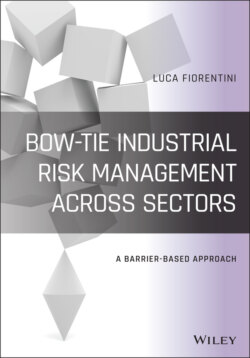Читать книгу Bow-Tie Industrial Risk Management Across Sectors - Luca Marmo, Luca Fiorentini - Страница 20
Preface 7
ОглавлениеEnzo Matticoli
Renewable Energies HSE Director
When I met Luca Fiorentini the first time, I was attending his Bow‐Tie method presentation at 2017 Safety Expo Bergamo. I saw a Bow‐Tie diagram and I was impressed by the power of a tool (new to me) that would have supported both fire risk management and identifying the barriers to mitigate it. It was clear to me that a risk‐based approach is essential.
In 2012, I moved from the Oil & Gas sector to Renewable energy. Moving from an international working environment (Europe, Middle East, etc.) to an Italian photovoltaic company, I experienced a very poor HSE culture together with a very bad HSE climate. In order to improve the HSE key performance indicators, I had to start from the basics. Nevertheless, I had the opportunity to build and certify HSE‐integrated management systems based on the international standards. Having had continuous improvement as a driver, I was looking for new tools to reach the highest HSE standards.
So, in 2019, together with Luca Fiorentini and Rosario Sicari, we developed a photovoltaic fire risk assessment with the barrier‐based Bow‐Tie method. Some barriers were already in place; some others needed reinforcement or a different implementation. Stakeholder involvement, fire break zones, video surveillance systems, fire brigade training and close cooperation with O&M contractors, lightning protection system (LPS), insurance policies, automatic fire detection systems, inverter protection and safety systems, and so on are some of the proactive and reactive barriers identified to mitigate photovoltaic plants’ fire risks, focusing on the top event.
As HSE professionals, the most difficult challenges are those regarding top management involvement. I will never forget that during the HSE senior management review, when I presented the Bow‐Tie analysis, as soon as the Bow‐Tie diagram was on the screen, I immediately got the directors’ attention. They had an overview of multiple plausible scenarios in a single and organic picture. No doubt the Bow‐Tie method helped directors address measures to avoid unpleasant consequences such as loss of life, business interruptions, reputational damage, and so forth. Without such a clear and powerful tool, it would have been much more difficult. A personal thanks goes to Luca and Rosario.
